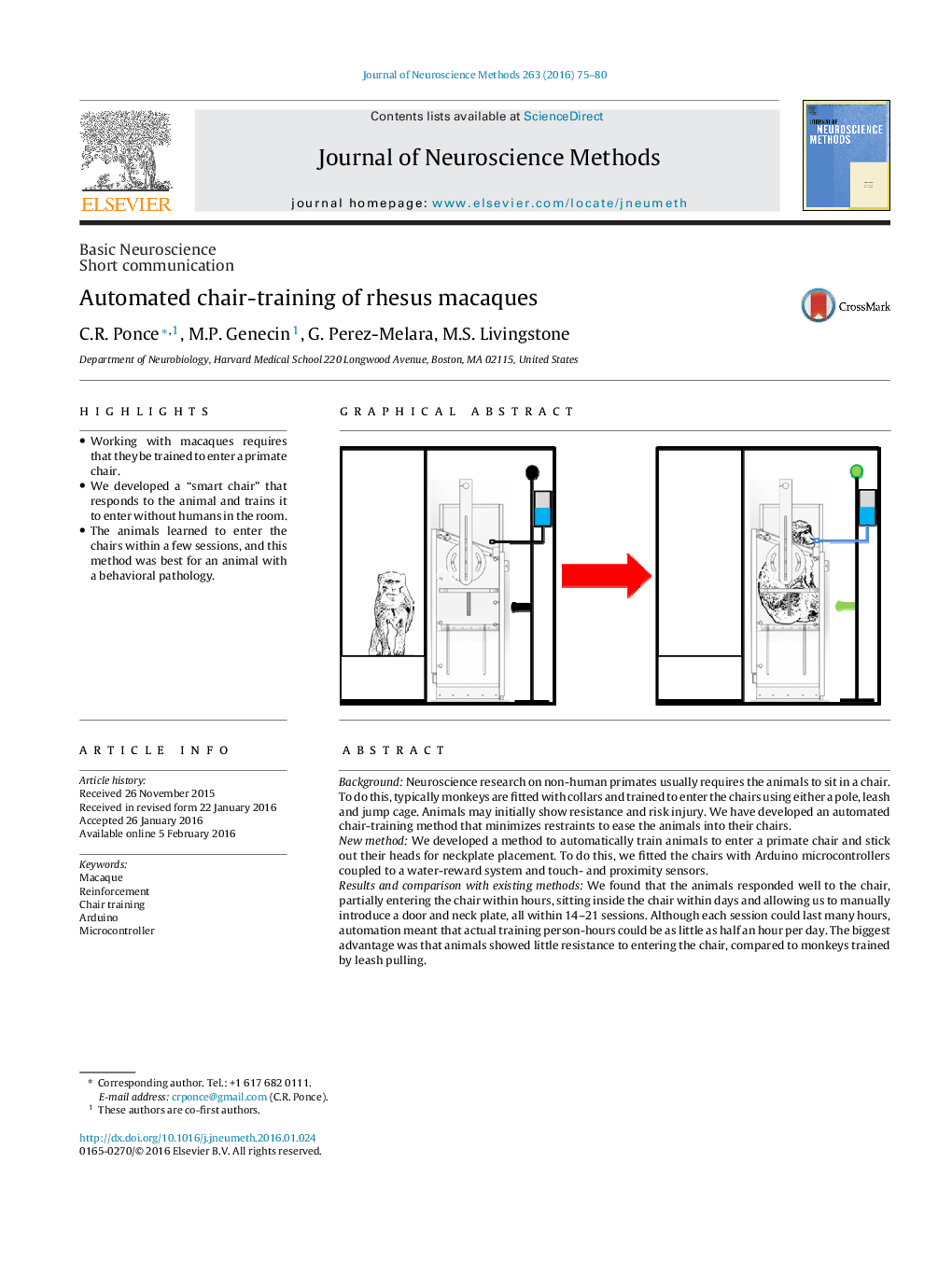| کد مقاله | کد نشریه | سال انتشار | مقاله انگلیسی | نسخه تمام متن |
|---|---|---|---|---|
| 4334889 | 1614606 | 2016 | 6 صفحه PDF | دانلود رایگان |
• Working with macaques requires that they be trained to enter a primate chair.
• We developed a “smart chair” that responds to the animal and trains it to enter without humans in the room.
• The animals learned to enter the chairs within a few sessions, and this method was best for an animal with a behavioral pathology.
BackgroundNeuroscience research on non-human primates usually requires the animals to sit in a chair. To do this, typically monkeys are fitted with collars and trained to enter the chairs using either a pole, leash and jump cage. Animals may initially show resistance and risk injury. We have developed an automated chair-training method that minimizes restraints to ease the animals into their chairs.New methodWe developed a method to automatically train animals to enter a primate chair and stick out their heads for neckplate placement. To do this, we fitted the chairs with Arduino microcontrollers coupled to a water-reward system and touch- and proximity sensors.Results and comparison with existing methodsWe found that the animals responded well to the chair, partially entering the chair within hours, sitting inside the chair within days and allowing us to manually introduce a door and neck plate, all within 14–21 sessions. Although each session could last many hours, automation meant that actual training person-hours could be as little as half an hour per day. The biggest advantage was that animals showed little resistance to entering the chair, compared to monkeys trained by leash pulling.ConclusionsThis automated chair-training method can take longer than the standard collar-and-leash approach, but multiple macaques can be trained in parallel with fewer person-hours. It is also a promising method for animal-use refinement and in our case, it was the only effective training approach for an animal suffering from a behavioral pathology.
Figure optionsDownload as PowerPoint slide
Journal: Journal of Neuroscience Methods - Volume 263, 1 April 2016, Pages 75–80
